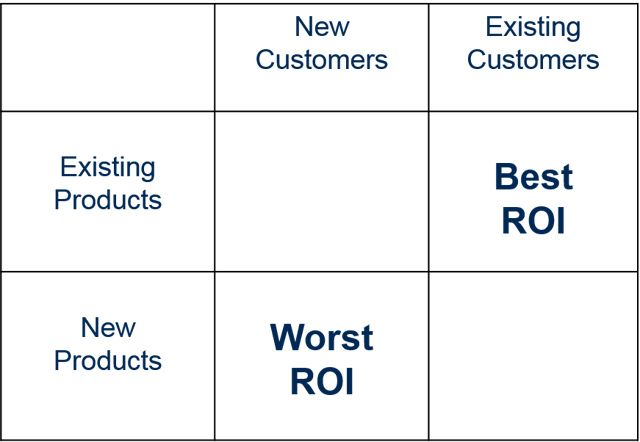How To Choose The Right Marketing Methods For A B2B Company

It’s hard for B2B companies to choose the right marketing methods. There are dozens to choose from (quite literally – in Mezzanine's marketing planning process, we look at over 40 different potential marketing tactics for every company).

How is a B2B company supposed to navigate through the options if they’ve never tried them before?
Sadly, there isn’t a standard prescription for B2B companies when it comes to their marketing road map.
Many factors influence which tactics a company should use. Some of those factors are:
- Company size (start up, with no existing customers, or a large installed base of past and present customers)
- Growth goals (ambitious or moderate)
- Past marketing (has the company done marketing in the past and has a solid platform, or does it need to create one)
- Competitors (are they aggressive marketers or non-marketers)
- Position in the market (is the company a price leader or follower)
- Target market (which kind of customers the company is pursuing)
- Industry (is the company in a mature or emerging sector)
…and that's just a few of the factors that influence which marketing methods are ‘right’ for any given business.
Guidelines for choosing the right marketing tactics
Even though the formula for choosing the right marketing tactics is complex, there are some rules of thumb that we’ve learned over the years in working with a few hundred B2B companies.
1. Start with sales support
The first marketing tactic that most B2B companies should implement is sales collateral.
If your sales team lacks a company overview presentation, product specification materials and sell sheets, the sales reps will be hamstrung in how they can present your company to potential customers.
As good as your products and services are, if you’re presenting to a new prospect and the materials are weak, they’ll weaken your pitch. And that means that all the dollars being spent on your sales team will be generating less return than you’d like.
Which materials to develop?
It varies by industry, but certainly website, company overview presentation (PowerPoint), sell sheets, team biographies and product technical specifications are worth considering.
2. Then focus on where returns will be highest – existing products and existing customers

Many people think that marketing is all about launching new products in the market and attracting new customers.
Not necessarily.
In fact, the best returns from marketing (ie, return on investment) come from selling existing services and products to existing customers.
And the biggest risk in marketing (and often the lowest returns) comes from pitching new solutions to new prospects. After all, your existing customers already know you and trust you, which is the starting point for business relationships in B2B.
Use this framework to select your market tactics.
What tools will help you promote existing products to existing customers? Email is usually a good one. So is bundling products that customers don’t currently use with the ones they currently do, so that you can introduce new services to existing customers.
Most B2B companies offer a breadth of services, but their customers often only buy one thing from them. That’s a golden opportunity to get more ‘share of wallet’ from your customer base, and prevent competitors from making inroads.
3. Then introduce new products to the existing base
After you’ve done a good job of using tactics to promote existing products and services to existing customers, move on to tactics that will help launch new products to existing customers. Consider inviting customers to "lunch n learns," webinars and trade shows to showcase your latest innovations.
4. Finally, focus on new customers
New customers can be the hardest way to secure new revenues (unless you’re a small company with a limited base of past and present customers, in which promoting to that small base can only take you so far).
Some of the tactics to consider for promoting your products to new customers are SEO, PR and executive seminars.
5. Pulling it all together
It wouldn’t be fair if I didn’t admit that the framework isn’t black and white.
Many of the marketing tactics can multi-task and play a role in several of the 'quadrants' and promoting products to new and existing customers (like tradeshows and webinars, for example).
But the framework is a great way to keep you focused on the marketing tactics that are most likely to generate the best returns for your marketing investment. And that’s always the right focus.
.png?width=2361&height=488&name=Mezzanine%20Logo_Horiz_RGB_on%20blue%20(1).png)
